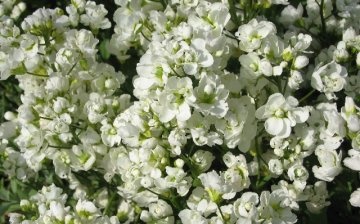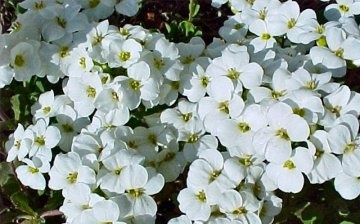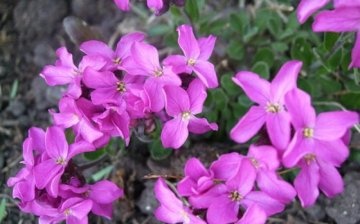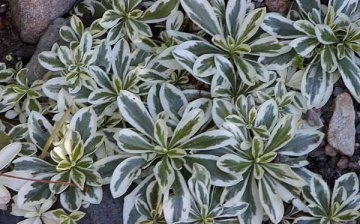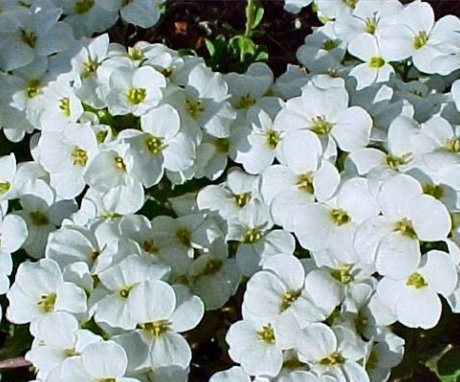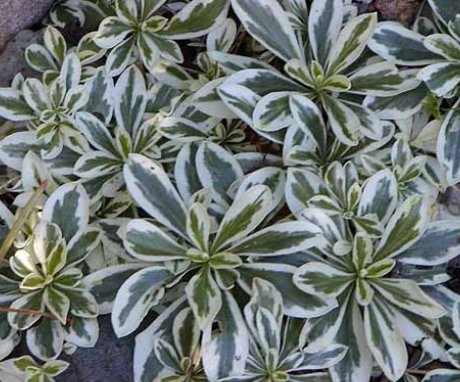Arabis in the photo. Cultivation of Arabis
The unpretentious inhabitant of the Arabis gardens, in the photo looks like a spectacular carpet of luxurious flowers. At the same time, flowering is distinguished by its duration and aroma. And after the plant has faded, its gray-green jagged foliage attracts attention.
Content:
Most often grown alpine arabis and Caucasian Arabis. Alpine Arabis is larger and more spreading. It blooms in April-May with pink or white flowers. Caucasian Arabis blooms only in June, always with white flowers. Ciliate-leaf arabis is distinguished by its purple color.
Arabis care rules
Here are some important points to pay attention to, growing arabis:
- The soil
Arabis is not particularly picky about any particular type of soil, but it is important to remember that this plant does not tolerate excess moisture, so it should be planted on sandy, well-drained soils. If you plant Arabis in waterlogged soil, then the plant will begin to get wet, and in winter it will also freeze.
- Watering
The plant does not need abundant watering, as it is able to extract moisture from the depths of the earth. Only in the case of very hot weather, in order to prevent the soil from drying out, more abundant watering is needed than usual. It should be remembered that the spring stagnation of water in the soil is often the cause of plant death.
- Location and amount of light
Arabis can grow both in sunny areas and in partial shade. In the sun, the flowering will be more magnificent, and in partial shade the plant grows faster. If the snow melts early, the plant should be shaded, because its shoots can dry out from the hot sun.
- Temperature
Arabis is a hardy plant that can survive even in temperatures as low as -7 degrees. Can even hibernate in the snow if properly planted. In the spring, the affected areas are easily restored.
- Weeding
When caring for this perennial, special attention should be paid to weeding, as well as shortening the growing shoots, so that the plant does not drown out neighboring crops. And the plant grows quickly enough.
- Fertilizer
Arabis practically does not need feeding, since the plant is quite unpretentious, given its ability to grow in sandy soil. The only case when additional fertilization may be needed is the period before the flowering of the plant.
- Plant appearance
Since Arabis is able to grow for a long time in the same place, its foliage can gradually shrink, and the shoots can stretch out and become bare. In this case, of course, they can be shortened, but it is best to update the plant. To do this, sprinkle the bare areas with humus mixed with sand in equal proportions. This procedure allows the plant to rejuvenate, receive additional nutrition, and also stimulates the formation of new roots on the shoots. Another important point is that after the flowering of Arabis, the peduncles are immediately removed.
Reproduction of Arabis
Arabis propagates by seeds and vegetatively. You can divide the bush or rooting the cutting, the role of which is quite suitable for the top of the stem, remaining during pruning, with a length of 6-8 centimeters. The plant is cut in May, before the beginning of June. When planting, it is necessary to remove the two lower leaves and plant the cutting at an angle. Depth approx. 4 cm. Rooting will take about 3 weeks. It is imperative to shade the cuttings with grass or paper.Water and spray periodically. Already in September, the plant can be planted in a permanent place.
Seeds can be sown in spring or before winter. When sowing in spring, the seedlings should appear on the 20th day, but they bloom only in the second year. And the plant will grow and look like arabis in the photo, only after a few years.
In addition, the reproduction of Arabis can be carried out using layering. How is this done? To do this, it is necessary to tilt the stem of the Arabis as much as possible to the soil and fix it in the area of the leaf node, while pinning the top of the stem. When new roots are formed, the young rosette can be detached from the mother plant.
Arabis is a worthy decoration for any garden
Thanks to a fairly long flowering, as well as an incredible aroma, many gardeners are happy to plant this plant. This plant grows well on alpine hills. It is planted between bushes, along the edges of flower beds, along paths and between slabs. This plant also looks perfect in rock gardens and rockeries, on retaining walls and in niches of fences (brick and stone).
As for the combination with other garden plants, the Arabis looks very beautiful next to tulips and irises... Also looks beautiful together with arabis alissum and aubrietta.
So, Arabis can be said to be an ideal plant, since it does not impose unnecessary requirements for caring for it, but at the same time it is a bright and fragrant decoration of the garden.



